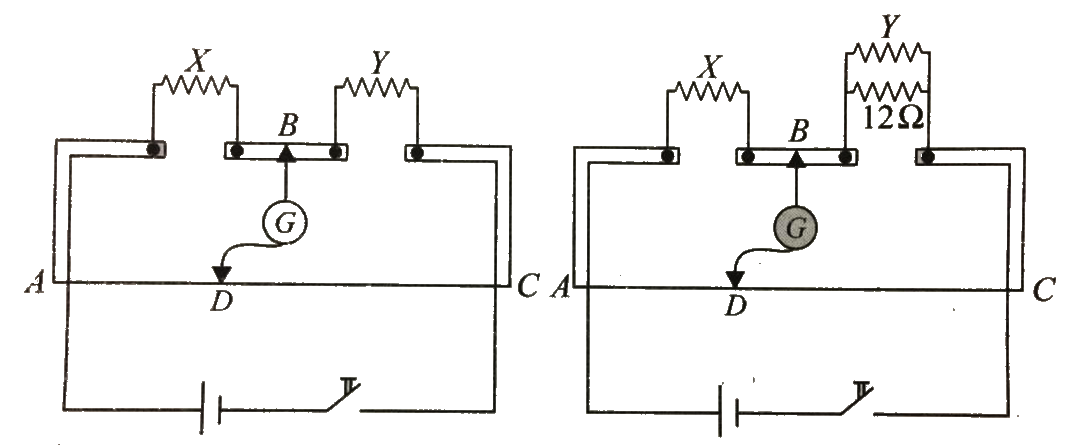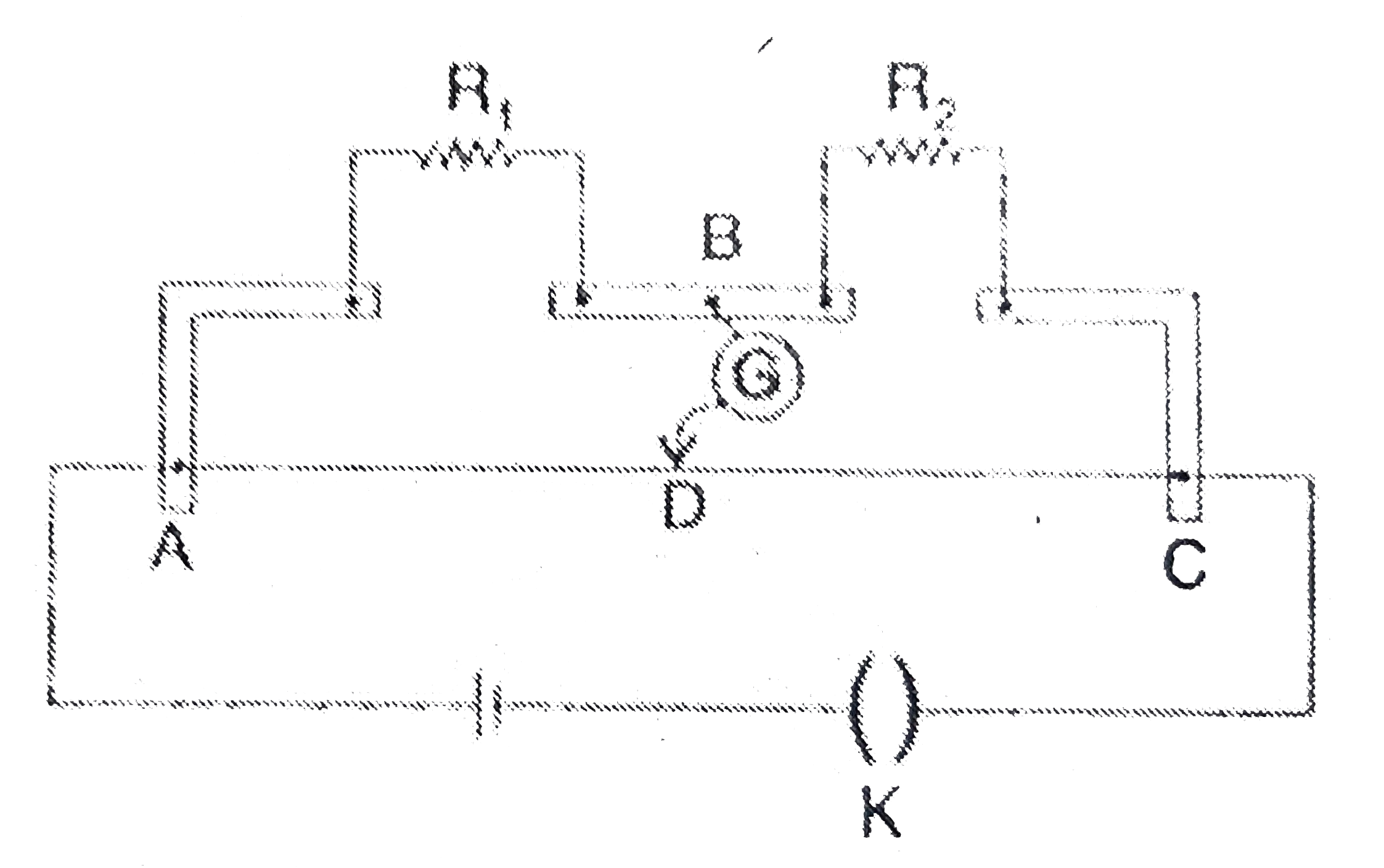Figure 6.32 shows a meter bridge in the (which is nothing but a particle wheastone bridge), consisting of two resistors X and Y together in parellel with a meter long constantan wire of uniform cross section.

with the help of a movable contact d, one can change the ratio of resistance of the two segments of the wire until a sensitive galvanometer G connected across b and D shows no deflection. The null point is found to be at a distance of 33.7cm. The resistor Y is shunted by a resistance of 12Ω, and the null point is found to shift by a distance of 18.2cm. Determine the resistance of X and Y.
The correct Answer is:x=6.85ω and y=13.47Ω
As the wire is if uniform cross section, the resistances of the two segments AD and DC of the wire are in the radio of the lengths of AD and Dc. According to the condition of balance of wheatstone bridge,
Xy=l1l2
Here l1=33.7cm and l2=100−33.7=66.3cm
XY=33.766.3 (i)
As resistance Y' is due to a parallel combination of resistance Y and a resistance of 12Ω,
1Y'=1Y+112=12+Y12Y or Y'=12Y12+Y
Since Y' is less than Y, the ratio X/Y' will be greater than X/Y and the null point should shift toward end C.
XY'=33.7+18.266.3−18.2=51.948.1
or X(12+Y)12Y=51.948.1
or 12+Y=51.948.1×12×66.333.7
=25.47Ω
or Y=25.47−12=13.47Ω
putting this value in Eq.(i), we get
X=33.766.3×Y=33.766.3×13.47=6.85Ω
Topper's Solved these Questions
- ELECTRICAL MEASURING INSTRUMENTSBOOK - CENGAGE PHYSICS ENGLISHCHAPTER - ELECTRICAL MEASURING INSTRUMENTSEXERCISE - Single Correct
94 Videos
- ELECTRICAL MEASURING INSTRUMENTSBOOK - CENGAGE PHYSICS ENGLISHCHAPTER - ELECTRICAL MEASURING INSTRUMENTSEXERCISE - Multiple Correct
7 Videos
- ELECTRICAL MEASURING INSTRUMENTSBOOK - CENGAGE PHYSICS ENGLISHCHAPTER - ELECTRICAL MEASURING INSTRUMENTSEXERCISE - Exercise 6.1
15 Videos
- ELECTRIC POTENTIALBOOK - CENGAGE PHYSICS ENGLISHCHAPTER - ELECTRIC POTENTIALEXERCISE - DPP 3.5
15 Videos
- ELECTROMAGNETIC INDUCTIONBOOK - CENGAGE PHYSICS ENGLISHCHAPTER - ELECTROMAGNETIC INDUCTIONEXERCISE - compression type
7 Videos
Similar Questions
When a wire of uniform cross-section a, length I and resistance R is bent into a complete circle, resistance between two of diametrically opposite points will be
View SolutionConsider a resistor of uniform cross-sectional area connected to a battery of internal resistance zero. If the length of the resistor is doubled by stretching it, then
View SolutionThe wire AB of a meter bridge changes linearly form radius r to 2r from left end to right end. Where should the free end of the galvanometer be connected on AB so that the deflection in the galvanometer is zero?

View SolutionIn a potentiometer experiment, the galvanometer shows no deflection when a cell is connected across 60cm of the potentiometer wire. If the cell is shunted by a resistance of 6Ω, the balance is obtained across 50cm of the wire. The internal resistance of the cell is
View SolutionIn a meter bridge set up, which of the following should be the properties of the one meter long wire?
View SolutionIn a meter bridge set up, which of the following should be the properties of the one meter long wire?
View SolutionIn a meter bridge set up, which of the following should be the properties of the one meter long wire?
View SolutionA battery is connected across a resistance wire of uniform cross-section . If another resistance wire is connected in parallel, then the intensity of electric field in the first wire will
View SolutionIn the meter bridge experimental set up, shown in the figure, the null point 'D' is obtained at a distance of 40 cm from end A of the meter bridge wire. If a resistance of 10Ω is connected in series with R1, null point is obtained at AD=60cm. Calculate the values of R1andR2.

View SolutionFor determination of resistance of a coil, which of two methods is better Ohm's law method or meter bridge method ?
View Solution
